Description
You get a 4 Ounce Culture Cup.
These little guys are great for many different types of fry that may be too small for Grindal worms. Microworms are a great worm for feeding fry that are too big for vinegar Eels, but too small for Grindal worms, or white worms. They are easy to culture. Mix a batch of oatmeal and let cool. Add a pinch of yeast and mix in. Add your starter culture and watch out! There will be a population explosion. Room temperature is fine for these worms. We suggest splitting your starter culture in two and making two cultures so that if one culture fails you have another. We culture our Microworms weekly. Place a cloth over the container to keep flies out.
Harvesting Microworms is very easy. The worms climb up the sides of the containers. Scrape the walls of the container with a spoon or knife. Dip the spoon of knife in a cup of water. You will see the worms swimming. Use an eye dropper and feed to the fry as many as you need.
Hundreds to thousands of worms in each containerMedia Recipes. Well, finally we’re talking about the main subject — microworms. These little guys (and gals) multiply like crazy in small covered containers. Feed them a gooey mixture of: oatmeal, yeast and water.
Start. Introduce a glob of microworms from an existing culture. The worms do the rest. In one or two weeks they start swarming up the sides for you to harvest.
No Magic Formula. This is not rocket science. Nearly any proportions will work as long as you use the three ingredients. The easiest way is to pour a ¼ inch of dry oatmeal in your container, sprinkle the surface with dry yeast, and add a little water. You don’t even need to stir unless you want to. Some microworm ranchers cook their media. Waste of time unless you plan to eat part of it for breakfast.
Small Containers. You can raise tremendous quantities of microworms in a plastic shoe box. Or you can use those clear, shallow plastic drinking glasses. Just make sure your container is shallow enough to get your finger into. Petri dishes are too shallow. The worms crawl completely out of the container. Of course, all you need to do then is rinse the container top into your fry tank. But the worms also crawl out onto your counter.
Cover Your Containers. Microworms need some sort of cover to keep them humid enough to crawl up the sides. Covers also keep house flies and fruit flies out. Even a piece of aluminum foil will work. Snap on tops fit a little too tightly. The carbon dioxide from the yeast can suffocate your worms. Poke some small holes in your lid.
We Like Oatmeal. Regular or instant oatmeal both work. Ditto Pablum. Instant oatmeal or baby cereal starts them off faster. Regular oatmeal starts them growing slower but keeps them from spoiling much longer. However, you can also use cornmeal, wheat flour, or even white bread. Microworms, which thrive in most moist soils, are not picky eaters.
Add Water. Water activates your microworm culture. Pour in enough water to make a paste for best long term results. If you make the mixture soupy, it starts faster but peters out quicker. If you add too much water, put in enough oatmeal to thicken your mixture.
We Like Dry Yeast. Any kind of yeast will work. Dry yeast is simply more convenient to keep. Just sprinkle it on the surface. If you live in San Francisco and make your own sourdough bread from scratch, just add microworms.
Starting Your Culture. Start your microworms from a healthy existing culture. By healthy, we mean a yeasty smelling culture. As they “mature,” they turn dark colored and get skanky smelling. You don’t want to continue a bad smelling culture unless you have no choice. Most get skanky as time goes by. Start your new cultures while you can still approach your old culture without a HazMat suit.
Add Clean Worms. By adding worms only, you lessen your chances of continuing the gross that accumulates in old microworm cultures. The easiest way is to scrape worms off the side of your current culture dish and add them to your new culture dish.
Smell? Healthy cultures actually smell pretty good. Growing yeast gives off carbon dioxide, water, and a pleasant aroma. Dead yeast and dead microworms give off the skanky odor you associate with old cultures.
Rinse or Not? Some microworm keepers go one step further. They put their new starter worms in a container of water and rinse them off first. They pour off the excess water and add the rinsed worms to their new culture. But as we said earlier, this is not rocket science. This step might pay off if you’re forced to work with an old culture that has gone bad (turned dark or started smelling bad). But on average, they need no rinsing.
Recharging Cultures. Since it’s so easy to start a new culture, few people want to fool around with jump-starting an old culture. Some people even throw away their old culture containers. (Outdoors, we expect.) But if you’ve let your old culture run down by ignoring it too long, you may need to recharge it before you can get a new one started. Just mix in some of your standard formula and re-cover the top. If even two worms survived, they will replenish your culture. Start new cultures from this re-juiced culture.
Harvesting Method #1. The easiest way to harvest worms is to wipe them off the sides with your finger. Or use a tiny rubber spatula, if you’re a weenie. Then just feed them to your fry. Rinse your finger in the fry tank. Or rinse them into a container of water and feed them out with an eyedropper.
Harvesting Method #2. Another trick is to add enough water to make the worms liquid and pour them off into another container. Then use an eye-dropper to feed them out. Tip: Do not pour them directly into your aquarium. If you ever accidentally pour a glop of culture medium into your tank, you will regret it. This is one time you can learn from another’s mistake.
Worm Size. Adult microworms range in size from 1/10 to 1/8 inches long. The baby microworms are even tinier. So you get a real range of food sizes edible by the smallest fry.
Microworm Nutrition |
|
| Protein | 48% |
| Lipids | 21% |
| Glycogen | 7% |
| Organic Acids | 1% |
| Nucleic Acids | 1% |
Worms Sink. Microworms wiggle like crazy, but they can’t swim. They fall to the bottom fairly rapidly. This means you should keep your fry in a tank devoid of gravel, so the worms don’t disappear into the muck on the bottom. Their sinking tendency makes them an ideal food for baby corydoras. Baby corys can find them easier in bare tanks.
Worms Survive. Since microworms live a long time in a water environment, they survive very well in an aquarium (unlike baby brine shrimp). They won’t live for days, but they do live for 24 hours. This means you don’t have to re-feed every four hours. But, watch out for overfeeding.
First Food? Brine shrimp still take top honors as the first food for most fry. They swim where the fry swim, so they are more likely to be eaten. In fact, both are attracted to the light. Since both swim in the same area, the fry bump into the shrimps and eat them. Microworms are better for week-old fry — those that have learned to “look around a bit” for their food.
More First Food? Adult microworms measure 1/10th to 1/8th inch. However, their babies are much smaller. This means you can feed microworms to some of the tiniest fry — such as anabantids. Betta fry especially find them tasty. Shallower the water the better. Sponge filters work best. (Typical betta fry setup.) Put some snails on your clean up crew.
Even More First Food? You can lift microworms off your tank floor with an airstone. Or you can McGyver a microworm feeding station with a piece of airline made into a floating ring. Put a piece of plastic wrap on top with pin holes punched in it. Put your worms into your feeding ring. This will let the microworms descend into your tank over a longer time.
Microworms or Brine Shrimp. As we said, nematodes abound everywhere. Supposedly, microworms came from beer vats. But you can find them under most garbage cans. If you raise white worms, sooner or later you will get lots of microworms in there. For most people, microworms take a back seat to live, newly hatched brine shrimp. Still, they make a great supplemental food for fry and young fishes. Add microworms to your live food menu. LA

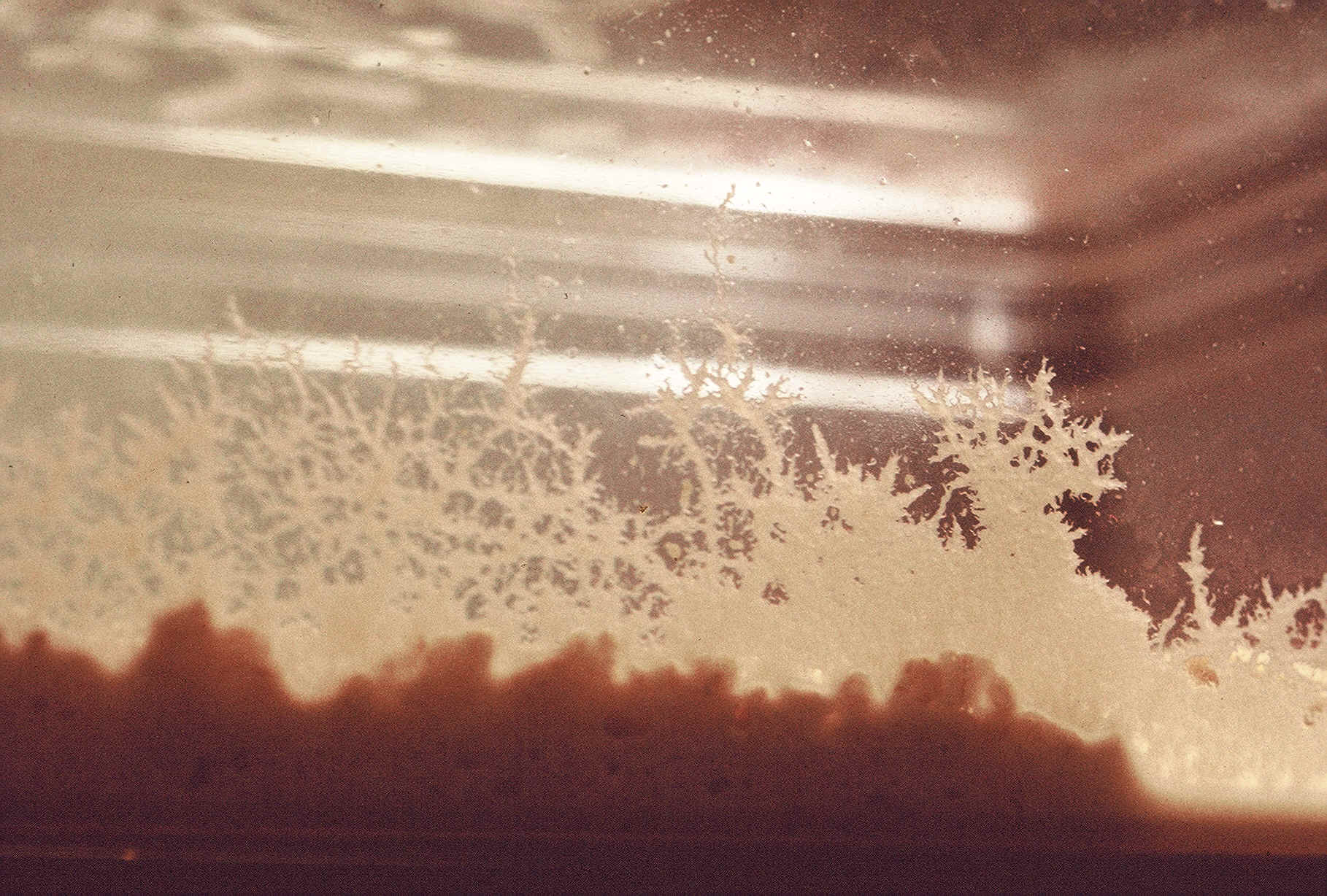
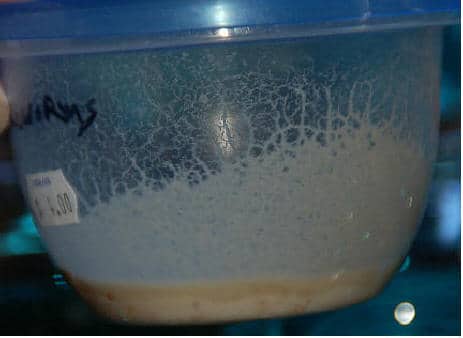
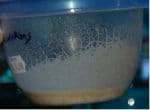

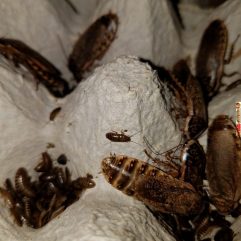
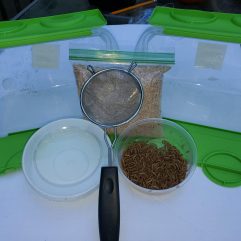
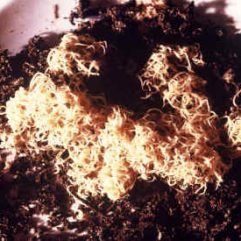

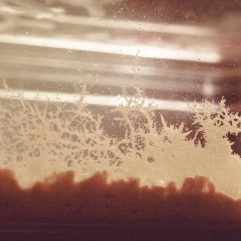
Reviews
There are no reviews yet.